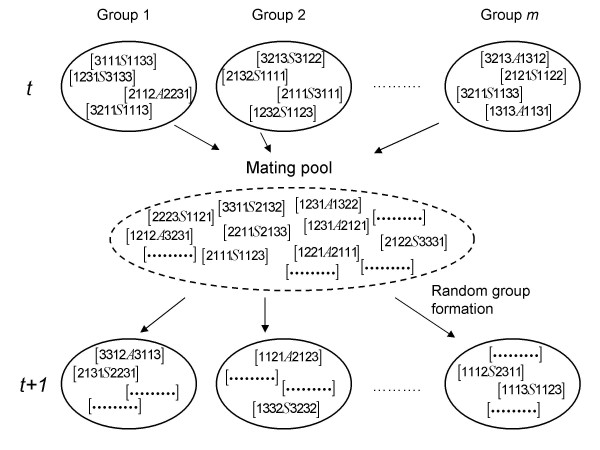Figure 1.
'Mating pool' mode of reproduction. A finite population is subdivided into m groups. Each group has size n. Haploid individuals (represented as [...]) are endowed with G loci with 3 alleles each (j = 1, 2, 3) that code for whole-group effects according to eq. 3. A focal locus with two alleles (A: altruistic; S: selfish types) is located in the centre of the set of G loci. Selection at the focal locus is modelled following eq. 4. Individuals contribute offspring to a common pool, where random pairing of two haplotypes and recombination between adjacent loci with frequency R occurs. Haploid individuals again form new groups by random assortment. Notice that at the focal locus we are dealing with the classical group selection model analyzed by Hamilton [1].

